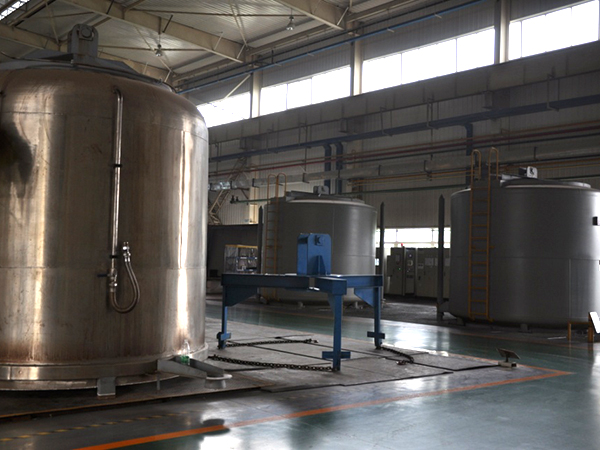400-000-0000

Most multi-purpose furnace heat treatment furnaces are made of refractory materials and thermal insulation materials. This is because the heat treatment furnace is usually at a high temperature when it is working. All non-metallic materials that can withstand high temperatures and withstand the physical and chemical effects of high temperatures are collectively referred to as refractory materials. When designing and constructing the heat treatment furnace, the rational selection of refractory materials and insulation materials is of great significance to meet the requirements of the heat treatment process, increase the service life of the heat treatment furnace, save energy and reduce costs. Here we first understand the commonly used refractories.
Refractory materials commonly used in heat treatment furnaces include clay bricks, high alumina bricks, lightweight refractory clay bricks, silicon carbide refractory products, aluminum silicate refractory fibers, and refractory concrete.
(1) The main raw materials of clay bricks are refractory clay and kaolin. Clay bricks are widely used in heat treatment furnaces and can be used to build furnace roofs and furnace bottoms. However, due to its weak acidity, it has a corrosive effect on iron and aluminum heating elements, and cannot be used as a brick for electric heating elements and as a lining for high-carbon atmosphere furnaces.
(2) High alumina bricks and corundum products, high fire resistance, high use temperature up to 1500 degrees Celsius, high temperature structural strength, good chemical stability, mostly used in high temperature heat treatment furnaces and salt bath furnace linings, bricks for electric heating components, etc. . Corundum products are high-aluminum bricks with high high-temperature structural strength and fire resistance. They are often used in resistance wire mandrels, brick thermocouple sleeves, and high-temperature furnace bottom bricks.
(3) Light-weight refractory clay bricks and ultra-light refractory clay bricks have low load softening starting points, that is, low-temperature strength, poor chemical stability, and large volume change. It should be used as the protective layer of heat treatment furnace lining. When the high temperature structural strength and fire resistance meet the requirements, light refractory clay bricks should be selected as much as possible.
(4) Silicon carbide refractory products have a fire resistance of more than 2000 degrees Celsius, high temperature structural strength, high abrasion resistance and good thermal conductivity. According to its manufacturing process, it can be used for electric heating components of high temperature furnaces, furnace floor of high temperature furnaces, etc.
(5) Aluminum silicate refractory fiber is a new type of soft fibrous refractory material, which has the function of refractory and heat preservation. According to different raw materials, it can be divided into silicate road, quartz, alumina and graphite refractory fiber. It has the characteristics of light weight, good thermal stability, low thermal conductivity, etc., easy to process and convenient to install, and can also be made into prefabricated blocks or prefabricated boards sandwiched between two layers of refractory materials. General heat treatment furnaces use aluminum silicate fibers, and vacuum furnaces, hot-pressing furnaces and atmosphere furnaces use graphite fibers as refractory materials. However, some atmospheres in the heat treatment furnace have a corrosive effect on the refractory fiber, which affects its use range.
(6) Refractory concrete It is a refractory material obtained by agglomerating alumina with certain particle size as aggregate, cementing, forming and hardening with cement. Its advantage is that it can increase the speed of repairing and laying bricks, and its service life is similar to that of bricks made with refractory bricks, so the cost is low. The disadvantage is low fire resistance.
